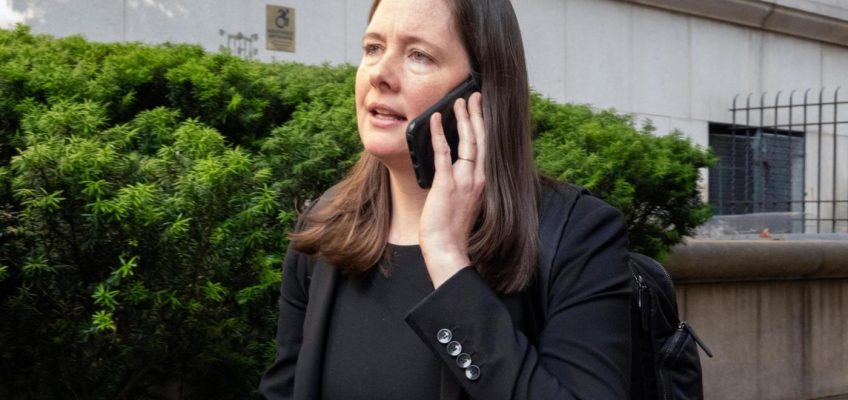Last week, the Family Research Council’s longtime president Tony Perkins exulted over the win the Trump administration delivered to the Christian right: “Churches will now be unshackled,” he declared.
In a federal court filing, the Internal Revenue Service (IRS) signaled it would reinterpret a longstanding ban on candidate endorsements by tax-exempt 501(c)(3) nonprofits. The so-called Johnson Amendment, named for its author and then-Senator Lyndon Baines Johnson, has long targeted by Christian conservatives for allegedly infringing on pastors’ free speech rights and religious liberty.
Under the new interpretation, houses of worship—including churches, synagogues, mosques, and temples—can endorse political candidates without jeopardizing their tax-exempt status. The IRS proposed to treat such endorsements “not as campaigning but as a private matter, like ‘a family discussion concerning candidates.’” The policy change was presented in federal court as a way to settle a lawsuit brought by two Texas churches and an association of Christian broadcasters that sought to have the Johnson Amendment declared unconstitutional.
While the proposal doesn’t fulfill the Christian right’s desire to completely eliminate the Johnson Amendment, it does deliver a key victory, one that will surely disrupt an important social compact at the heart of this venerable provision in ways that may remake the religious and political landscape.
The proposal “basically tells churches of all denominations and sects that you’re free to support candidates from the pulpit,” law professor Lloyd Hitoshi Mayer told The New York Times. “It also says to all candidates and parties, ‘Hey, time to recruit some churches.’”
It’s no surprise this IRS policy shift came under the second administration of President Donald Trump, whose political success owes much to his deep support among the Christian right and who has long vowed to “totally destroy” the Johnson Amendment.
However, it should be noted that the IRS proposal doesn’t entirely “destroy” this tax provision but instead opens up the possibility of selective enforcement that could give politically allied churches a pass. As Amanda Tyler, executive director of the Baptist Joint Committee, stressed, the proposal “is NOT a repeal of the Johnson Amendment. It does not change the law, nor does it protect all churches from potential enforcement.”
The provision remains on the books and apparently still applies to other tax-exempt nonprofits (though enforcement of the law has generally been lacking for years). But the IRS move clearly undermines the policy, much to the delight of prominent Christian right activists. First Baptist Dallas senior pastor Robert Jeffress, a Trump ally and influential Christian nationalist, praised the administration and declared, “Government has NO BUSINESS regulating what is said in pulpits!”
By contrast, advocates for the separation of church and state condemned the maneuver. Americans United called it “a flagrant, self-serving attack on church-state separation that threatens our democracy by favoring houses of worship over other nonprofits and inserting them into partisan politics.” The group promptly filed a request to intervene in the lawsuit to defend the Johnson Amendment. (Full disclosure: I have previously donated to Americans United.)
The Johnson Amendment has roots in the grubby world of Texas politics. As historian Randall Balmer notes in a forthcoming book on church-state separation, while up for reelection in 1954, U.S. Senator Lyndon Johnson faced fierce “McCarthy-like attacks” from right-wing tax-exempt nonprofits (including one funded by Dallas oil tycoon H. L. Hunt). In response, Johnson sought to amend the tax code to prohibit tax-exempt nonprofits from politicking. The provision was passed by Congress without debate and signed into law by President Eisenhower, and in 1986 was strengthened under President Ronald Reagan.
In exchange for tax exemption—a hefty financial boon for organizations that may rely mainly on donations—nonprofits agree to refrain from “participating in, or intervening in, any political campaign on behalf of (or in opposition to) any candidate for elective public office.” That tax exemption amounts to a public taxpayer subsidy.
Moreover, the Johnson Amendment does not prevent churches and other nonprofits from engaging in any political activity. Ministers acting in their personal capacity are free to endorse candidates, and per IRS regulations, congregations can “advocate for or against issues that are in the political arena” and conduct voter education, registration, and get-out-the-vote drives so long as such activities are “conducted in a non-partisan manner.”
Here, I think, critics of the Johnson Amendment have a legitimate complaint. In today’s hyper-polarized environment, it isn’t always easy to determine what is and isn’t non-partisan—when, say, support for reproductive rights is closely associated with the Democratic Party and opposition with the GOP. Yet whether that difficulty justifies ending the provision is another question altogether.
The ban on churches endorsing candidates is overwhelmingly supported by Americans. According to a 2022 poll by the Pew Research Center 77 percent of Americans surveyed oppose houses of worship endorsing political candidates and 67 percent say houses of worship should keep out of political matters altogether. Interestingly, not only do most Christians (72 percent) oppose church political endorsements, but so do most white evangelicals (62 percent), who form the base of the right-wing Christian nationalist movement.
Despite widespread public disapproval of church politicking, Christian right activists have long chafed at the Johnson Amendment, contending that it makes the IRS into “speech police” and chills the constitutional rights of religious leaders.
And this opposition to the Johnson Amendment often goes hand-in-hand with the ideology of Christian nationalism. If politics is inherently about getting and keeping power, Christian nationalism is inherently political: it seeks conservative Christian dominance over law and government. Take, for instance, the rhetoric from someone like Pastor Jeffress saying Trump is “the only one going to take us to the promised land.”
Moreover, one of Christian nationalism’s variants, the New Apostolic Reformation, views politics as a key part of a cosmic battle between good and evil, painting Democrats and other opponents as demonic and issuing divine blessings of political leaders like Trump. By interpreting away the ban on endorsing or opposing candidates, the IRS may only further encourage this kind of divisive, demonizing politics in churches.
While such Christian nationalist ministers may be eager to take advantage of this new policy, it’s not clear that there will be a broader rush among clergy into the political realm. Only 9 percent of clergy in the U.S. said they had “endorsed or opposed a candidate while preaching, speaking, or writing to their congregation,” according to a recent survey; just 14 percent indicated they would if the tax law permitted.
Given the widespread unpopularity of candidate endorsements by houses of worship, I suspect most congregations will continue to refrain from the practice. Candidate endorsements risk introducing partisan divisions and rancor into congregations. Furthermore, if congregants and the wider public start to see ministers as little more than political flacks, both clergy and church may be tarred with the same negativity with which the public views politics and politicians generally.
Still, there are real concerns about this policy change. For one, the IRS may have now opened the door for dark money to flood into churches—a particular concern here in Texas, where lavish campaign-related spending by Christian billionaires from West Texas now exerts tremendous sway over state politics. As the Campaign Legal Center notes, if the ban on electioneering was lifted, churches could become “super dark money groups” for anonymous donors to bankroll electoral campaigns—with a charitable tax deduction to boot.
Further, the move is part of a broader undermining of church-state separation, that bedrock constitutional principle that prevents any one religion from monopolizing the religious realm. Here in Texas, church-state separation has been under sustained attack by Christian nationalist-minded lawmakers and activists for well over a decade—most recently with new laws passed requiring that the Ten Commandments are posted in every public school classroom, that schools provide a daily period for prayer, and the enactment of a school voucher scheme using taxpayer funds to subsidize religious education.
It’s too soon for certainty about the impact of the new IRS policy as, for now, it applies only to the parties in the lawsuit. But opponents of the Johnson Amendment like Tony Perkins are likely to test the boundaries and push to permanently unshackle the church. One thing is clear: this change has the potential to reshape both politics and religion in the U.S., in ways that may not be healthy for either.
The post How Trump’s IRS May Unshackle Churches from Their Political Restraints appeared first on The Texas Observer.



